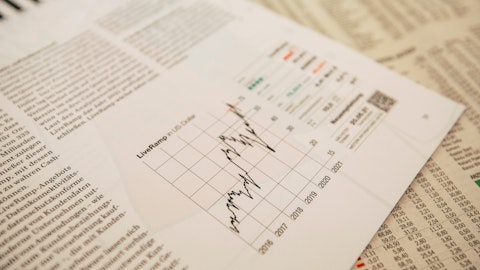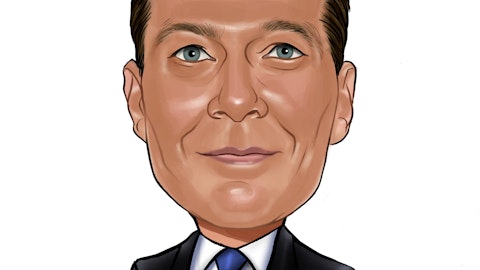Sean Connolly: Yeah. Ken, it’s a mix of all the above. The comps are clearly much more favorable. We’re clearly going to have some stronger merch investment in the back half. And we’ve got A&P focused on our largest brands with good margins. So those are all well positioned to have an impact. But I think the key here is this consumer behavior shift. And I do think when you see all the competitors in such a tight bandwidth, which is frankly a tighter bandwidth than I’m even accustomed to seeing, you know it’s a macro dynamic. And the way to think about what we saw in the first quarter with respect to the behavior over the summer was, it was this paradoxical combination of selective splurging and broad-based belt tightening. So as an example, consumers may have simply said, I’m taking that summer trip and it’s not up for debate.
And then at the same time, said, I’m going to change some things up to create an offset. And so in our line of work, it’s what we call compensating behavior. But one of the other things we know about consumer habits and practices is that they are very hard to change long term. So these shifts tend to be temporary tactics that people use to get through a period of time when they’ve committed more of their cash to something else. And I think the summer travel example is illustrative of what I’m talking about there. And so this is a bit of a different animal than what we would call normal elasticity effects because normal elasticity effects are really brand level elasticity effects that are consumer judgments about the value of a particular brand versus another close-in alternative following a price increase.
These macro behavior shifts are a bit of a different animal. Here, the consumer is not passing judgment on the value of a specific brand following a price increase, rather, they’re temporarily reranking how they prioritize entire categories in order to live within their means for a period of time. So why does it matter to understand the difference between this versus normal elasticity? Well, in our experience, it’s because behavioral shifts at a category level tend to be shorter in duration. And it’s — a simple way to think about it is consumers are creatures of habit. So it’s very difficult for them to deprioritize things like convenience benefit. So this is one of the key reasons we expect these shifts to be temporary. They have been in the past, and that’s what we expect again.
And it’s also why we’re really loading up our resources in the back half where we think the market conditions will be much more favorable to driving the kind of impact we’re seeking.
Ken Goldman: Thanks, Sean. I’ll pass it on.
Operator: Thank you. And our next question today comes from Pamela Kaufman with Morgan Stanley. Please go ahead.
Pamela Kaufman: Hi, good morning. You talked about your plans to step up A&P and trade spend over the rest of the year. Just wanted to get a sense for — if this was kind of consistent — the amount was consistent with your initial expectations heading into the year? Or if you’re now planning for greater reinvestment compared to your initial plans given volume trends?
Sean Connolly: It’s higher, Pam. It’s obviously — the consumer dynamic in the first quarter was tougher than we planned for. We do think the conditions — the macro conditions will be more favorable in the back half and we’re in a fortunate position where we got off to a strong start in the year on profitability. So we’ve got some room to invest back. So we’re talking about a higher investment posture on Merch, in particular, in the back half of the year as now we’ve got the supply chain working.
Pamela Kaufman: Okay. Thanks. That’s helpful. And then I guess, do you feel like there are areas in the portfolio where you’ve taken too much pricing and do you envision a scenario where pricing growth turns negative?





